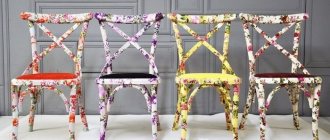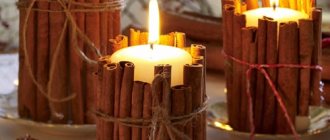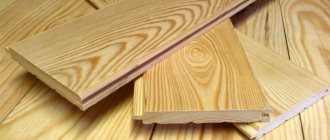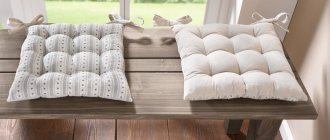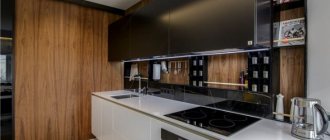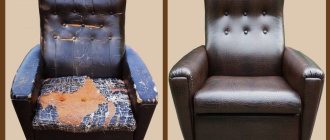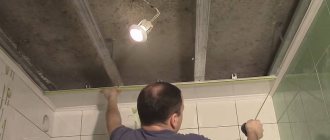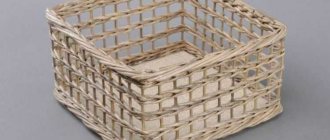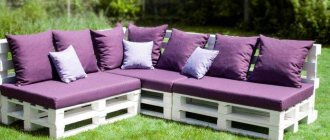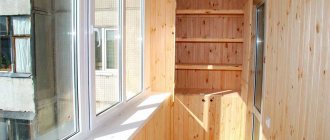As often happens, we received the technology related to the production and use of MDF boards from the USA. The North American continent often supplies Europe with new technologies, most of which are truly useful and remain for a long time in various industries and fields.
Painting MDF began to be used overseas several decades ago, and in Russia this technique is just spreading.
The coloring of MDF boards is determined by the format of use of this material. Thus, MDF is virtually never used for external work. This material is not sufficiently resistant to moisture and temperature changes. In addition, MDF's strength and ability to withstand pressure also leave much to be desired. Finally, compared to some other materials, MDF panels are quite expensive to be used for facade cladding.
But the use of MDF boards indoors is quite extensive. Today, such slabs form the basis for wall decoration and the production of a wide variety of furniture (mainly cabinet furniture). Accordingly, painting of MDF panels always takes place indoors.
Types of paints for MDF
Painted MDF
There is no need to list specific brands, and it is impossible to do so. We will only talk about the varieties and brief characteristics of paints, taking into account the method of their manufacture. The specific type must be selected taking into account the operating conditions of the MDF board, design preferences and financial capabilities. The range in price and quality is quite wide, there is plenty to choose from.
| Type of paints | Brief performance indicators |
| Water based | The most popular for painting large surfaces, they have satisfactory performance characteristics and are completely safe for residents. They can be white or colored, for interior and exterior work. |
| Acrylic-silicone | Combines the advantages of acrylic and silicone paints, an environmentally friendly product. Inhibits the proliferation of microflora and mosses, and has high levels of resistance to mechanical stress. |
| Silicone | They repel water and are not afraid of moisture and high temperatures. Surfaces are easily cleaned from dust and dirt. Due to their high elasticity, they can easily compensate for thermal expansion of MDF boards. |
| Polyvinyl acetate | Some of the cheapest, recommended for use indoors with minimal risk of damage. During use, you should strictly follow the manufacturers' recommendations, otherwise peeling will occur. |
| Oily | Traditional dyes, in addition to giving a beautiful appearance to surfaces, effectively protect them from moisture penetration. To increase adhesion, it is recommended to use primers. |
| Alkyd | They have a perfectly smooth surface and are made on the basis of alkyd enamels. Plastic, resistant to abrasion. Disadvantage: they fade quickly when exposed to direct sunlight. |
Before buying paint, calculate the surface area and purchase materials with a reserve. Consumption is indicated by the manufacturer. If it is recommended to coat the surface with a primer before painting, do not simplify the work. Insufficient adhesion of paint to the MDF board causes peeling. As a result, there is a need for expensive and time-consuming repairs.
What paints are suitable for MDF
Prices for different types of construction paints for wood
Construction paint for wood
Technology
- The first step is to completely disassemble the furniture (unscrew the doors, remove fasteners, fittings, glass). Cover the areas that do not need to be painted with masking tape, and use a marker to mark the holes between the parts so that they then fit into place. Remove dust, dirt and old paint.
- It is very important to properly degrease the surface before applying primer. If this is not done, the facade will have defects. The best degreaser is organic-based, the so-called Anti-silicone. With its help, fats, oils and silicone are removed. It is also suitable for interlayer degreasing.
- The surface of the facade should be prepared so that it becomes absolutely smooth. To do this, remove the old coating and go over it with sandpaper for the first time.
- Putty and seal all chips and cracks, then sand them with sandpaper (grit P 180).
- The surfaces are primed with a special insulating mixture (also called a primer), which ensures less paint consumption. When the soil has dried, go over it again with a P 240 grit brush and apply the main color. Its application method is indicated on the can, depending on the composition.
- Then the surface is varnished and polished.
- The very last stage is removing the masking tape, assembling furniture according to the marks, hanging hinges and installing handles.
Tools
To apply paint you will need brushes, a paint gun or a roller. It all depends on your budget, professionalism and work preferences. But remember that an ideal surface is obtained only when using a spray gun or spray gun.
The spray gun not only paints, but also primes. There are two types of pistols: pneumatic and electric. The former operate using air pumped by a compressor, and electrical appliances require an appropriate outlet. The nozzle diameter is within 1-1.3 mm and this is enough for uniform spraying.
When buying a roller or brush, be sure to pay attention to the markings, which indicate what composition they are suitable for. For example, a roller with velor bristles is ideal for water-dispersed paints, and natural and combined bristles on the brushes allow stain, acrylic or varnish to adhere well.
Auxiliary materials you will need: gloves, lung protection (mask, respirator), sandpaper of different grain sizes, sanding felt (Scotch-Brite), degreaser or anti-silicone, solvents, masking tape, markers.
How to remove old paintwork
Most often, the top layer on furniture is gloss (varnish or paint). If you do not remove it, the new material will not stick and will not hold. Therefore, the top is treated with the coarsest sandpaper (P220-280). You don’t have to remove all the paint, but simply go over the entire surface to create roughness for better adhesion.
Old coatings can be easily removed with special removers. The most universal are numbers 646 and 647. For acrylic car enamels, R-12 solvent is used. To clean the base enamel, you should purchase a solvent that matches the composition of the base. It is also needed to clean the spray gun and other surfaces from paint residues.
Acrylic compounds are only sanded off. Otherwise there is no way to remove them.
There is another removal option - with a hair dryer (torch). It is suitable for polyester coatings. Under the influence of high temperature, the varnish cracks and is then removed with a spatula or chisel.
Grinding
A perfectly smooth surface is the key to a high-quality coating. This can only be achieved through pre-grinding.
Different grits are required for different sanding steps. From P220 to 280 - this is the preparation of the base for priming. P 320 – removes uneven ground, and P500 is intended for sanding before applying paint.
For finishing and delicate sanding today, Scotch Brite or non-woven felt (with a grain size of P800) is used. It allows for final sanding immediately before painting. Its foam base bends and perfectly handles all unevenness, and an analogue can be found on kitchen sponges.
Painting
The painting itself is not difficult. If you use a can or spray gun, be sure to protect your respiratory tract with a respirator. The device should be located at a distance of 15-20 cm from the facade. Remember that painting translational movements are carried out strictly in one direction.
Paint for MDF furniture facades is applied to completely dry soil and perfectly flat surfaces. For a more concentrated and deeper tone, cover the facades again. The smoothness of the new layer is broken with sandpaper to increase the adhesion of the next one. If you have several colors, then the dried first layer is sealed with masking tape and the paint is applied again.
Applying varnish
Painting furniture facades with MDF varnish usually takes place in one layer of glaze and several layers of paint (maximum 3). In this case, the surface must be completely dry (the same glisal dries for up to 7 days).
The first layer is a barely visible coating, which is needed to avoid drips from the thicker subsequent layers. It is important that the work area is not dusty, otherwise any fluff will be visible in the light. It is for these reasons that painting outside is not advisable.
Each layer of varnish is applied at intervals of up to 10 minutes. And the result of this will be a perfect glossy facade with a mirror effect.
Finishing and decoration
The final sanding of the facades is carried out using P500 sandpaper. The thinnest layer of material is at the ends, so you should work here carefully.
After sanding, go over it again with Scotch Brite. In this case, special care need not be exercised, since the material is soft and does not damage the surface.
Painting kitchen facades is not limited to this; they can be further decorated. This can be the application of regular varnish, glazing (glizal) or polishing. Glizal is a translucent paint for kitchen facades, slightly reminiscent of marble stains. It is diluted with water and applied in several layers.
Patterns on the facade can be created in all sorts of ways (using a damp sponge, a hard brush or a textured roller). But this should be done quickly, as the glisal immediately begins to dry out. At the very end, you should coat the panel again with clear varnish.
There is also this type of decor called “raindrops”. 2 colors are used. Darker paint is applied first. When it hardens, drops of water are sprayed with a regular sprayer. Immediately, without waiting for it to dry, apply the next color with a light spray using a spray bottle. When the paint has dried, the area is sanded with Scotch Brite (P 1200-1500) and varnished.
Types of varnishes for MDF
The technology of coating surfaces with varnish is much more complicated than working with paints, but the effect justifies all the effort. When choosing a specific varnish, you need to take into account not only its properties and price, but also the location of application and operating conditions. The following types of varnishes can be used to coat MDF boards.
| Varnish type | Composition and brief characteristics |
| Alcohol | Made from ethyl alcohol and artificial resins. In terms of price, they belong to the low category; drying time, depending on the conditions and thickness of the layer, is 20–30 minutes. |
| Alkyd-urea | Two-component compositions are characterized by increased strength. They consist of urea and alkyd resins; a hardener must be added before use. They are characterized by increased strength and excellent shine. |
| Epoxy | Two-component, increased impact resistance, can have prolonged contact with water. Used to cover MDF tables. |
| Polyester | Resistant to aggressive chemical compounds, withstands elevated temperatures well. Multicomponent varnishes on polyester resin. |
| Nitrocellulose | The composition contains resins, plasticizers and solvents. They have high water resistance, are polished, and have average mechanical strength. |
| Acrylic-urethane | They are diluted with water, are safe for health, and have increased adhesion to surfaces. They can be exposed to high temperatures and humidity for a long time. |
| Polyurethane | They are produced in one-, two- and three-component versions. The complete hardening time is up to two weeks, they are characterized by increased wear resistance, and have a high adhesion coefficient with all lumber. |
| Acrylic | Odorless, non-toxic, diluted with water. Prolonged contact with food is allowed. In terms of performance characteristics they have average indicators. |
Sherwin Williams Wood Classics Polyurethane Varnish (Sherwin Williams)
This information will help when choosing a brand of varnish; consider as many individual factors as possible. Keep in mind that the appearance and service life of MDF facades largely depend on the quality of the composition.
Prices for various types of construction wood varnishes
Construction varnishes for wood
Technology for painting furniture facades made of MDF
Quite complex work that requires care, skill and patience. They are made in several stages, each of which significantly affects the final quality. It is much faster and better to paint facades with a spray gun; if you don’t have one, use high-quality brushes with soft, durable bristles.
A classic and highly wear-resistant brush
The temperature in the room should be at least +20°C, if there are a lot of individual elements of the MDF facade, then think about the places for drying them: racks, supports, etc. In most cases, after painting the slabs, it is recommended to varnish them, it protects the surfaces from damage, hides minor flaws and significantly improves the design look. Varnishing is a complex process that requires special tools and equipment. We will tell you how MDF boards are varnished below, but for now we will focus on painting.
We have already told you what criteria to use to choose paint. For furniture facades, we can only add that the paint color should take into account the purpose of the furniture and the intensity of its use.
Step 1. Surface preparation. For furniture facades, in addition to cleaning from dust and degreasing the surfaces, it is imperative to sand them with sandpaper No. 150–180.
Sanding MDF before painting
Working manually is long and difficult, and achieving the desired quality is almost impossible. We recommend using a professional electric reciprocating surface grinder or cylindrical grinding unit.
Sanding MDF surface
The edges are sanded with special four-sided sponges. It is advisable to work in a respirator. When grinding, do not stop the tool in one place; it should always be in motion. One trace must overlap the next by at least a third of the width. There is no need to press the sandpaper too hard; if problem areas remain on the surface, it is better to go over the entire area again rather than making a depression in one place.
Practical advice. Any grinding is accompanied by a large amount of fine dust. Take all measures to ensure that it does not fall into adjacent rooms.
Step 2. Thoroughly clean surfaces from dust. Simple brushes are not enough; you definitely need a powerful vacuum cleaner or compressor. Check the condition of the parts; if there are sharp edges, remove them. The IMF does not have much strength; sharp corners will certainly crumble.
Step 3 . Prime the surfaces. Experienced craftsmen recommend using two types of primer, twice each. You can prime with one primer without stopping for drying; apply the first layer with horizontal movements of the spray gun, and the next immediately with vertical movements. Regulate the amount of primer; there should be no puddles on the surface. The first primer is used to prevent further absorption of materials, and the second to improve the adhesion coefficient between them. The second one is applied only after the first primer has completely dried. Primer consumption per square meter is 80–100 grams.
Primer for MDF
Practical advice. It is very difficult for novice craftsmen to determine consumption by eye. To gain this skill, we recommend taking a small piece of MDF and weighing it on an accurate scale. Coat with primer and immediately re-weigh. Next, the area of the sample is calculated and the increase in weight is determined. Using basic mathematical calculations, the primer consumption is determined. Not enough - add more. Now remember what the MDF surface looks like, covered with the optimal layer, and in the future prime with the same amount.
Applying primer
We strongly recommend working only with a pneumatic sprayer; using a brush will never achieve “factory” quality. A professional will always notice traces of lint. Moreover, the sun's rays fall on the furniture from different angles, and such lighting enhances all the shortcomings of facial coverings. Immediately prime the ends of the structures.
If you need to paint the back side of the slab, start work only after the front side has dried. The drying time is indicated by the manufacturer, but adjustments must be made taking into account the actual microclimate in the room.
It is more convenient to apply the primer with a sprayer
Step 4. Start sanding the soil, use special sponges. If you don’t have them, take dishwashing sponges; they have adhesive tape glued to the back side. This special material, used for fine grinding, not only levels out the coating, but also leaves micro-scratches on the surface that improve the adhesion of the next coating. Movements are arbitrary in different directions. Circular movements of the sponge are not recommended, only back and forth.
Scotch Brite sponge
Step 5: Blow or vacuum away any dust that has accumulated on the surface. Working with a spray gun is very convenient for another reason - you can shut off the paint supply and use it to clean surfaces from dust like a compressor.
Step 6 . Proceed with applying the second type of primer. It is predominantly white in color and improves the performance of the following coatings. It also needs to be primed twice followed by sanding. Blow the dust off the MDF again. The algorithm of actions is no different from the technology described above.
Applying a second coat of primer
Step 7. The second layer of primer must be carefully sanded with electric tools using fine sandpaper. Do not rush, large flaws will already become noticeable on the finished product. If you have no experience working with such machines, we strongly advise you to practice on unnecessary pieces of MDF. You will learn how hard to press the sanding paper to the surface, how quickly to move it, what thickness of MDF can be removed in one pass, etc.
Step 8: Prepare the paint. The preparation technology is indicated by the manufacturer on the packaging.
Painting MDF panels
Painting MDF facades
Follow all recommendations. We have already mentioned that to work with a spray gun, the consistency must be more liquid. Immediately paint twice in transverse directions. You should already have practical experience in determining the quality of the coating and the amount of paint. Paint consumption ranges from 60–180 g.
Polishing the painted surface
Painted polished MDF board
After the coating has dried, you can begin varnishing the surfaces. For furniture interiors this is a mandatory step. The varnish not only serves as additional and reliable protection, but also significantly improves the appearance of MDF products.
Painted MDF furniture facades
Rules for quality painting
Processing MDF is a complex process, since it is necessary to obtain a surface with the properties of a mirror, and this requires a certain level of care, perseverance and patience from the performer. It is necessary to choose a convenient tool for the job, with which you can perform high-quality painting of facades.
For work it is better to use a spray gun. By applying layer after layer evenly and consistently, you will achieve the required quality. But to perform such work, you need to have practice and skills, because the uniformity of application of coating layers will largely depend .
Coating MDF boards with varnish
We will describe how this is done below. But for quality, four main conditions must be met:
- do not use cheap varnishes;
- strictly adhere to technology;
- have the necessary tools and equipment;
- have experience in performing complex painting work.
You will gain experience in performing such work and the ability to use tools while priming and painting products; working with varnish will be much easier. You can determine the amount of varnish on the surface by eye, and the spray gun will “automatically” move in the right directions and at the optimal speed.
Step 1. According to the instructions, prepare the varnish, consumption is approximately 100-150 g per square meter.
Open and mix the varnish
Start coating with varnish from the ends of the MDF; due to this technology, it is possible to minimize the number of areas with uneven thickness. A little bit of varnish on the front surface does not pose a threat to the final quality.
The process of applying varnish using a brush
After the first layer has dried, sand it with the finest abrasive. Professionals recommend using abrasive fiber No. 1200 according to the international classification. It can be purchased in specialized stores.
Sandpaper No. 1200
Step 2. Remove dust from the surface. Examine surfaces from different angles in a well-lit room. Everything is fine - cover the surface with a second layer of varnish. By the way, it is recommended to coat some facades with varnish up to 0.5 mm thick, and for this you will have to increase the number of layers to five or more. At industrial enterprises, the technology is different, where the varnish is immediately poured onto the surface of the required thickness, then the sheets are fed on a conveyor into drying chambers. This technology cannot be used at home.
Step 3 . The quality is satisfactory - proceed to fine grinding and polishing of the finishing layer. For fine sanding, use Velvet No. 1500, 2000 and 3000. Gently but thoroughly work the surface with each number, periodically removing dust.
SIA VELVET Grinding wheels
Practical advice. The quality of grinding will improve significantly if the surfaces are slightly moistened with water. The varnish will not overheat; during work, microcracks will not form on the surface from the effects of abrasive materials. Microcracks refract light rays, the surface becomes matte.
Go over the entire surface with each number at least three to four times. The pressing force is slightly less than when grinding the primer. Sanding takes a lot of time. If you are tired, it is better to postpone the work to the next day rather than stop completely.
Step 4: Polishing. For polishing you need a special polishing paste and a perfectly smooth hard circle. There are many pastes, choosing is not a problem. Study the recommendations and compare them with your individual conditions. Take your time, constantly check the condition of the surfaces using light.
Polishing
If you have a fairly large amount of work, we recommend purchasing special electric polishing machines. They not only speed up and make work easier, but also significantly improve quality. Apply the polishing paste to the disk in a layer of approximately 1–2 mm, do not level it; during operation, the excess paste will be removed from under the disk and will remain on the surface of the MDF. Then, as needed, the rotating disk itself captures the required amount of material.
Electric polisher
As the last step, you can use rubbing surfaces with compounds that provide a mirror shine.
Prices for the range of polishing machines
Polishing machine
RETAIL PRICES WITH VAT FOR PAINTING
Matte varnish - 2,400 ₽/m²
Glossy varnish – from RUB 3,900/m²
Matte enamel — 2,990 RUR/m²
Glossy enamel — 4,400 RUR/m²
PRICE LIST FOR PAINTING
The price includes certified paints and varnishes:
SAYERLACK, RENNER, Votteler, VeroMetal, MOBIHEL, SPIES HECKER
The choice of color is carried out according to catalogs: RAL, NCS, PANTONE, WCP.
We can tint the paint to match your sample if there is no suitable color in the palettes.
Painting facades of outbuildings made of MDF
We mentioned that this material is not recommended for exterior sheathing. But there are cases of its use for temporary finishing of facade walls of small old country outbuildings. This is what those owners do, whose financial condition does not allow them to purchase new materials; they use various used building materials, including MDF panels, to cover the facades of outbuildings.
In order to increase the service life of structures, we recommend painting the external surfaces. Don’t skip the primer; the price of the material is affordable for all developers, it takes little time to carry out the work, but the effect is obvious. Choose the type of primer based on the type of paint. On the packaging, the manufacturer indicates which primer should be used. The primer is done twice, the brush or roller should move in perpendicular directions. If for some reason this cannot be achieved, then prime each layer at least at an angle. In addition to increasing adhesion, primer reduces the consumption of expensive paints and prevents stains from appearing from the base. You can paint with brushes of various sizes and rollers. But you can’t do it with rollers alone; the joints need to be carefully painted with brushes.
Step 1. Measure the area of the surface to be painted. Buy paint taking into account the area and consumption, do not buy paint “back to back”, always have a supply of material. It will be easier for you to work, and the surplus will always be useful for cosmetic repairs.
Standard laser rangefinder, convenient for taking measurements
Step 2. Thoroughly clean the MDF surface from dust, preferably using a vacuum cleaner. Dust particles may be noticeable on the surface of the paint, and it is impossible to remove them later. You will have to completely repaint the slab.
Step 3: Prepare your paint and tools. If the material has been stored in a warehouse for a long time, the composition should be thoroughly mixed before use. When painting a surface with a spray gun, the paint will have to be diluted slightly with a solvent. Which one to choose is written on the packaging. To guarantee, you can first pour a small amount of paint into the solvent. If the paint has curled, the solvent is unsuitable.
How to thin paint
Diluting paint with solvent
Step 4. Wet the roller or brush with paint and begin painting the surfaces.
Paint can be applied with a brush or rollers
Practical advice. Move the brush from top to bottom, so you will see streaks of excess paint and eliminate them in a timely manner. If you paint the other way around, you will have to constantly return to the previously painted area to eliminate drips. You may not notice them or forget to return - a problem will arise. If the streaks dry out, removal will take a long time. In some cases, they will have to be cut off with a blade and the coating surface adjusted.
Step 5 . Use a brush to paint the joints, making sure there are no lint marks left. In sales you can find low-quality paint brushes, their bristles hold poorly. To prevent it from being left on the surface, rub the brush with great force on any clean surface before use. Insufficiently secured hairs will come out and will not create problems during dyeing.
Painting the facade
Step 6 . Allow the first layer to dry, the time depends on the characteristics of the paint. Professional painters do not recommend drying with the windows open - dust gets into the room and sticks to the surface of the paint.
Apply the second layer
Step 7. If the quality of one layer is unsatisfactory, apply a second one. The technology is the same.
Externally painted facade
While painting surfaces, you can draw various patterns and ornaments. To do this, first draw contour lines with a pencil. Each color must first be covered with masking tape.
Prices for paint sprayers
Spray gun
Should I choose gloss?
Today, there are a large number of options for decorating kitchens - it can be imitation of natural wood or stone, brass, patina, antique painting, various patterns.
When deciding between a matte and glossy finish, some people have doubts, because gloss is very easily soiled. They say that all the prints and stains are visible on it. In addition, the gloss of a bright shade may look “tacky”. Let's not lie - there is some truth in these statements. However, this is not a reason to give up gloss!
Of course, if you have a large family with small children, then painting MDF gloss monochrome black is not the best choice. Dark gloss is suitable for kitchens where cooking is not done very often.
Professional recommendations
It is not recommended to use aerosol cans for painting furniture facades. Their main advantage is ease of use. As for the quality of the coating, professionals have many complaints about it.
Spray paint
To paint MDF wall paneling with rollers, buy them with fine pile. Such rollers leave fewer marks, the paint goes on more evenly and has time to level out during drying.
Short nap roller
The longer the paint dries, the more defects it can hide on its own. Quick-drying materials do not provide such an advantage; the surface dries out quickly and is poorly leveled.
Absolutely all MDF boards emit chemical compounds into the air. The notorious “environmental friendliness” depends only on their quantity. In different countries, sanitary control authorities set their own acceptable standards. What is considered harmful by some is considered environmentally friendly by others and is allowed for use. The amount of harmful compounds released can be minimized by deep impregnation. This is another reason not to abandon this operation when painting MDF.
If problem areas are discovered on the surface after the work is completed, they can be hidden with overhead decorative elements. Now on sale there is a large selection of designs on self-adhesive polyethylene film. With them you will not only hide your defect, but will give the surfaces a beautiful, exclusive look.
The pile on MDF boards does not rise; only natural wood has this drawback. When choosing paints and varnishes, pay attention to this feature. By the way, coatings that do not raise the pile during drying are much more expensive than ordinary ones; do not overpay for unnecessary properties.
Painted MDF
How to paint MDF yourself at home
MDF is actively used in interior decoration and furniture production. This fibrous wood material has very attractive technical characteristics, as well as an affordable price. Therefore, it is not surprising that more and more things around us are created precisely on its basis. It doesn’t matter whether we are talking about an object such as a stove, a sheet panel or the facade of a favorite kitchen unit - we still may need to paint it all. But this process is very difficult, and it is better to approach it thoroughly.
- 1 What makes MDF so popular
- 2 In what cases is painting necessary?
- 3 Alternative to dyeing
- 4 Several stages of work 4.1 How to prepare an MDF board for painting
- 4.2 Primer
- 4.3 Painting
- 4.4 Varnishing
